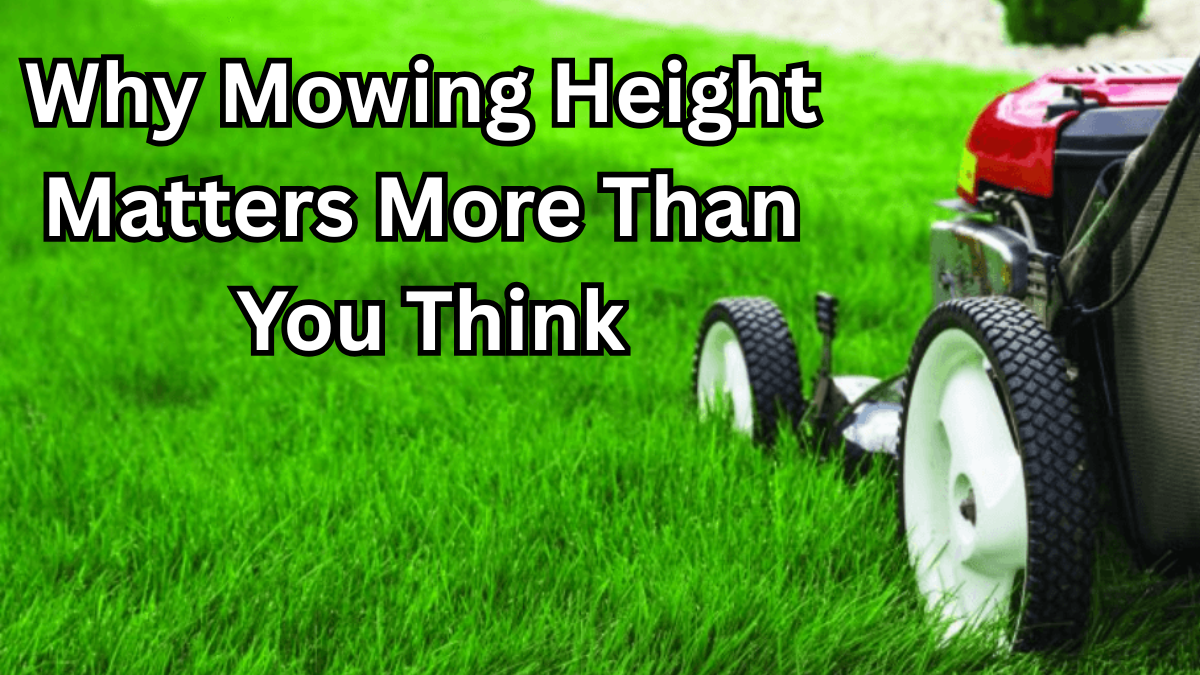When it comes to lawn care, many homeowners underestimate the importance of mowing height. The simple act of cutting your grass at the right height can drastically affect the health, appearance, and resilience of your lawn. In fact, mowing height matters more than most people realize—it’s not just about aesthetics; it’s about preventing stress, encouraging growth, and avoiding damage like scalping your lawn.

Understanding the Basics: Blade Height and Lawn Health
Your lawn’s health begins with the correct blade height. Adjusting your mower’s height can:
-
Reduce stress on grass roots
-
Promote deeper root growth
-
Minimize water evaporation
-
Help control weeds naturally
Different grass types require different blade heights. For example:
| Grass Type | Cool Season (Blade Height) | Warm Season (Blade Height) |
|---|---|---|
| Kentucky Bluegrass | 2.5–3.5 inches | N/A |
| Fescue | 3–4 inches | N/A |
| Bermuda | N/A | 1–2 inches |
| Zoysia | N/A | 1–2.5 inches |
Adjusting mowing height according to your grass type ensures the lawn can thrive throughout seasonal changes.
Avoiding Lawn Stress and Scalping
One of the most common mistakes is cutting grass too short, also known as scalping your lawn. This causes immediate stress to the grass, leaving it vulnerable to:
-
Sunburn and heat stress
-
Weed invasion
-
Dry, brown patches
By maintaining the proper blade height, you reduce stress and help your lawn recover faster from mowing, drought, and high temperatures.
Cool vs Warm Season Grass: Tailoring Your Blade Height
Not all grasses are created equal. Understanding the difference between cool vs warm season grasses helps you set the mower correctly:
-
Cool-season grasses (like fescue and bluegrass) thrive at higher mowing heights, especially in summer heat.
-
Warm-season grasses (like Bermuda and zoysia) can tolerate lower cuts but still need careful maintenance to avoid stress.
Adjusting mowing height seasonally is key. During hot or dry periods, raise your mower slightly to protect the grass.
Tips for Healthy Lawn Mowing
-
Never remove more than one-third of the grass height in a single mow
-
Keep mower blades sharp for clean cuts
-
Adjust blade height according to season and grass type
-
Water deeply but infrequently to encourage deep roots
-
Leave clippings on the lawn to act as natural fertilizer
FAQs About Mowing Height
1. Why does mowing height matter so much?
Mowing height influences root depth, water retention, and stress resistance. Correct height helps your lawn withstand heat, drought, and pests.
2. What is scalping and why should I avoid it?
Scalping occurs when grass is cut too short, leaving it stressed and weak. Avoid cutting more than one-third of the blade length at a time.
3. How do I know the correct blade height for my lawn?
Check your grass type. Cool-season grasses generally like higher cuts, while warm-season grasses can handle lower cuts. Seasonal adjustments are also important.
4. Can leaving grass clippings on the lawn help?
Yes! Clippings provide nutrients back to the soil, reduce water loss, and minimize stress on the grass.
Click here to learn more
